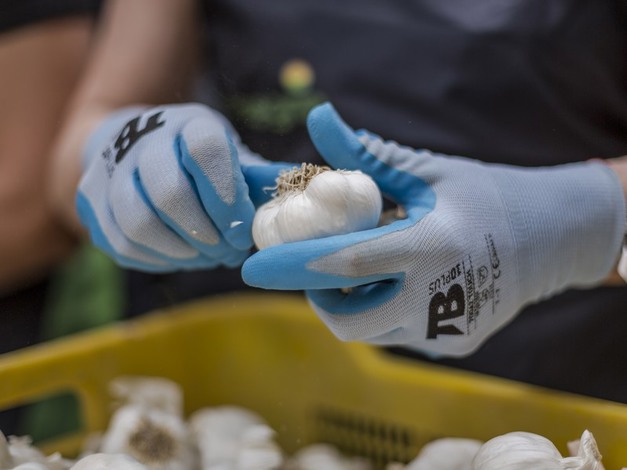These days of rainfall will be decisive for the recovery of the water reserves in much of the Iberian Peninsula, and to bring hope for the next campaign to garlic producers who, at this time, are deciding what to plant, following the great impact of the weather on this year's harvest. This year, Spain has had the warmest and the second driest spring since records started in 1961, according to the State Meteorological Agency, and the summer rains arrived when much of the national production was still in the fields, at the end of the drying phase.
"The garlic harvest season started in May and ended in August, and in general, it has been very challenging, with very bad developments and very low yields," said Felipe Gómez, general and commercial director of the largest garlic producer in Europe, Peregrin. "Unfortunately, I would say that it is the worst I remember in at least 34 years, and it will do much damage to producers, who could be considering planting different varieties in the coming years and growing more Spring garlic than purple, given the yields obtained this year."
The fact is that purple garlic has yielded around 6 tons per hectare, when it traditionally reaches between 9 and 10, and the yield of Spring garlic has reached 11 tons, compared to the usual 16 or 17," says Felipe.

"Calibers have also been smaller than average, forcing us to change the standard format on the shelves. This year, the weight of a 45-50 mm purple garlic, which used to amount to 42 grams, has dropped to about 36 grams; a symptom of accelerated growth caused by unfavorable climatic conditions. Therefore, up to 6 heads of purple garlic are being used to reach the same weight of the traditional 4 head meshes."
"However, we must remember that Spanish purple garlic is a product with unique characteristics, as it has not been cloned anywhere in the world. Its allicin levels are unmatched by any other garlic variety, and that's what gives it its flavor. It also has a much longer shelf life than any white or Spring garlic," says the general and commercial director of the firm that was a founding partner of the PGI Purple Garlic from Las Pedroñeras.

"Despite the smaller sizes, this year, out of pure necessity and to ensure the sector's subsistence, we must set a higher price, because we have obtained very few kilos per hectare. That potential extra profit will then have to be invested by many companies in buying product, if they are unable to meet all their commercial commitments with their own productions."
"The price on the shelves has increased by around 10%, but the truth is that it should go up even more. We trust that consumers will understand that producers are also people, and that a price increase is necessary after a 30-35% rise in the production costs and a 25% drop in the production volume."

"At Peregrin, we are hoping that our customers will also be aware of that, given that, in any circumstance, we still guarantee the supply of garlic and compliance with our programs," says Felipe. "To be able to offer the best service, we have set up a laboratory for the sanitation of our seeds, ensuring we always start off with quality plant material. We are working hand in hand with highly qualified professionals with the goal of strengthening both our relationship with our customers and our commitment to them by producing not just the best garlic, but the perfect garlic."

 For more information:
For more information:
SAT Peregrin
Paraje Barrio del Mortero S/N
04640 Pulpí, Almería. Spain
Tel.: +34 950 464 111
https://peregrin.es
